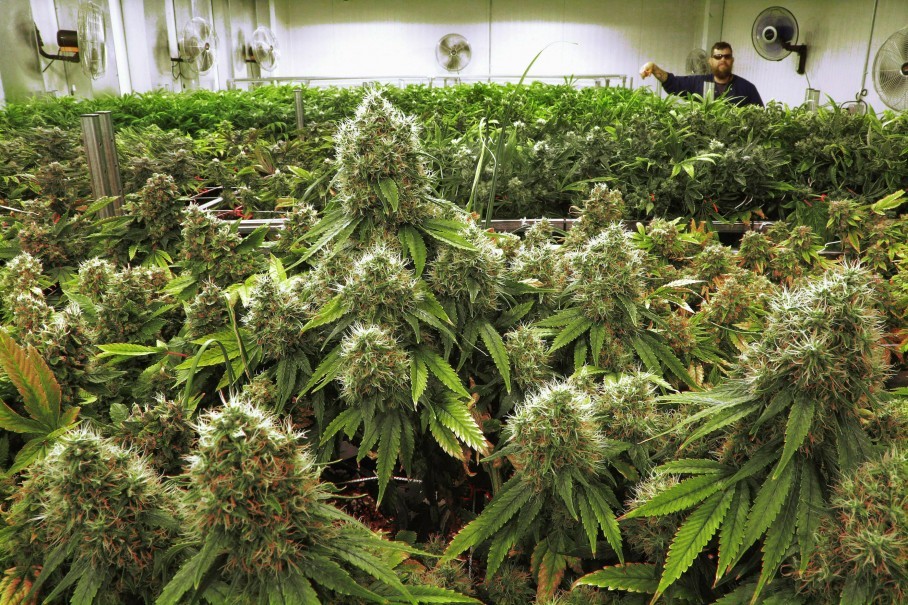Indoor, Outdoor or Greenhouse for a Marijuana Grow?
This topic is especially important to Adilas420. It is important for the government,rule makers and business owners to consider the environmental and financial impact when decieding how and where marijuana growers can grow.
Supporting the use of greenhouses and secure outdoor grows, in favorable environments, is in our best interest, but of course presents some challenges.
Indoor grows may allow cultivators to control environmental conditions and exposure to pests, but it is the most costly way to grow both for the business and for our environment. We are, after all, supporting a comprehensive green movement.
Many in the industry have already completed tests indicating the success in the use of LED lights, in regards to quality, yield and energy efficiency and costs for when indoor growing is the only option.
The Washington Post reports on the impact of indoor grows.
Why the marijuana business needs clean energy:
As legal marijuana markets continue to expand in the United States, some experts are arguing that growers have both the need and the opportunity to make their operations, well, greener. A new report, published by data analysis firm New Frontier, highlights the huge energy footprint of marijuana cultivation and outlines strategies to make production more energy efficient — a transition that the authors claim is not only good for the environment, but good for business, too.
“We wanted to focus on this issue of energy use in the marijuana industry because we think it is one that is going to have very significant long-term implications,” said the new report’s lead author John Kagia, director of industry analytics for the firm, which specializes in data and analytics for the cannabis industry. “Marijuana is the most energy-intensive agricultural commodity that we produce, and that’s largely because of the very high energy costs associated with its cultivation and production indoors.”
The new report draws on data from a variety of sources, including businesses within the industry, government agencies and consumer studies, and paints an alarming portrait of the industry’s extreme energy use. Research cited in the report suggests that marijuana production in the U.S. accounts for one percent of the entire nation’s electrical output — the equivalent of the electricity used by 1.7 million homes with a staggering price tag of $6 billion every year.
Most of this electricity is used to facilitate indoor cultivation, which is the focus of the new report. Historically, this growing strategy has been a way for growers to cultivate their plants discreetly, the report notes, although it also allows for more precise control over the plants’ environment. The problem is that all the controls required to maintain an indoor growing space can require huge amounts of electricity. In addition to artificial lighting, indoor cultivation also requires dehumidification, ventilation and air conditioning — all energy-intensive processes.The report’s focus highlights a problem that deserves greater attention, according to Evan Mills, an energy efficiency consultant and staff scientist at the Lawrence Berkeley National Laboratory. Mills served as an adviser to the new report and his independent research on the carbon footprint of cannabis production (not associated with his work at the national laboratory) is extensively cited in the paper. “State governments in California and elsewhere have begun to address the destructive impacts of unregulated outdoor cultivation, but have yet to recognize what may be even greater environmental consequences from the prodigious amounts of energy used by indoor operations,” he said in an email to The Washington Post.While the issue may remain under-addressed in many places, though, it is starting to gain mainstream attention. Last year, for instance, a paper in the Columbia Journal of Environmental Law noted the industry’s high power use and proposed that states in which marijuana use is legalized should also write policies requiring the industry to power itself with clean energy.
As an example of indoor cultivation’s intensive energy requirements, the new paper points to a report from utility company Xcel Energy, which claimed that marijuana facilities in Colorado consumed 200 million kilowatt-hours in 2014. Overall, New Frontier’s report estimates that the industry in the state paid an electricity bill of approximately $19.6 million in 2014 — notable, as he pointed out, because there were fewer than 1,200 licensed growers in the state that year.
From a financial perspective, Kagia pointed out that the historically high prices growers have charged for their products have enabled them to easily recoup the costs of such high energy use. But he suggested that the industry’s expanding legal market may soon be changing that.
“In an increasingly competitive environment, there’s a lot of downward pressure on prices, and we expect that as the environment becomes much more competitive, the ability to maintain the cost structure driven by such high energy use will be unsustainable,” Kagia said. “Currently energy accounts for approximately half of the wholesale prices of marijuana, and as those prices fall, the share of energy and the total production cost will continue to increase.”
So there’s an economic imperative to use less energy as well as an environmental one. The question is how it can be done. New Frontier’s report outlines a number of strategies on this front.
First, and most obviously, growers could switch to outdoor or greenhouse cultivation when possible. But Kagia pointed out that this isn’t an option for everybody. “There are some environments, by regulation or because of the environmental conditions, you would not be able to,” he said, noting that very cold or very hot climates would prohibit the growing of all but a few strains of marijuana. But in cases where state or municipal laws prohibit outdoor growing, the report suggests that growers begin advocating for less restrictive regulations.
However, there are certain other appeals to indoor growing, such as easier pest management, that may deter some growers from moving outdoors, even if the option is available. And it’s also important to note that outdoor cultivation, while certainly less energy-intensive, comes with its own set of environmental concerns. The large amounts of pesticides typically used to protect outdoor marijuana farms is among the biggest of these.
Fortunately, it’s possible to make indoor cultivation more energy efficient, the new report says. Installing more energy efficient lighting is one of the biggest steps. According to the report, growers have traditionally tended to rely on high intensity discharge lamps for their lighting. The report lists several more efficient alternatives, including specially designed LED lights and induction lights, which use magnets to transmit electricity.
“Over the past decade or so, great strides have been made in the lighting technologies or solutions provided by the LED companies,” Kagia said. “To date, they have still not been able to surpass the cost performance threshold offered by existing lights, but we are getting there, and we think this innovation that is happening around the lighting sector is one of the ways that this industry will be able to decouple itself from this extremely high energy use.”
The report also recommends that growers conduct energy audits and install smart meters to keep better track of where they are expending the most energy. And finally, Mills also noted that a major challenge for improving efficiency in the future will be for policymakers to get involved in the issue and “exercise foresight” when developing regulations that will affect the industry’s energy use. Addressing grow facilities in building energy codes, for example, and coming up with carbon-neutral building designs specifically for grow facilities is one forward-thinking goal he suggested.
“There is no reason that this industry should be exempt from the kinds of energy efficiency requirements or voluntary energy information and incentive programs that are otherwise so widespread,” he said by email. “Given the construction booms that have followed legalization in some states, it’s incumbent on policymakers to put energy plans in place beforehand.”
Source: The surprisingly huge energy footprint of the booming marijuana industry – The Washington Post

